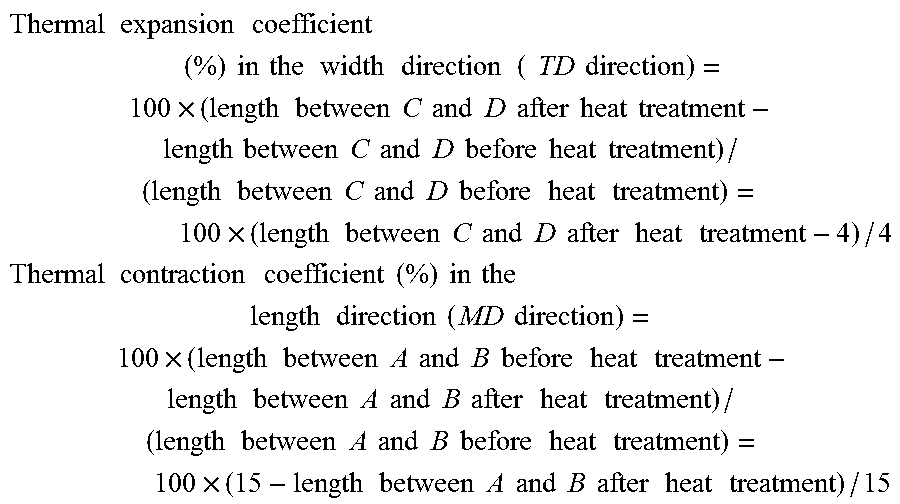Separator for nonaqueous electrolyte battery, nonaqueous electrolyte battery, and method for producing nonaqueous electrolyte battery
a technology of nonaqueous electrolyte and separator, which is applied in the direction of cell components, final product manufacturing, sustainable manufacturing/processing, etc., can solve the problems of reducing cycle life, and affecting the production efficiency of the battery. , to achieve the effect of excellent adhesion to the electrode, high yield and high yield
- Summary
- Abstract
- Description
- Claims
- Application Information
AI Technical Summary
Benefits of technology
Problems solved by technology
Method used
Image
Examples
example 1
[Production of Separator]
[0155]As a polyvinylidene fluoride resin, a vinylidene fluoride / hexafluoropropylene copolymer (98.9 / 1.1 [molar ratio], weight average molecular weight: 1,950,000) was prepared.
[0156]The polyvinylidene fluoride resin was dissolved to a concentration of 5 mass % in a mixed solvent of dimethylacetamide and tripropylene glycol (dimethylacetamide / tripropylene glycol=7 / 3 [mass ratio]) to give a coating liquid.
[0157]Both sides of a polyethylene microporous membrane (thickness: 9 μm, Gurley number: 160 sec / 100 cc, porosity: 43%, thermal expansion coefficient in the TD direction: 1.2%) were coated with the same amount of the coating liquid, followed by immersion in a coagulation liquid at 40° C. (water / dimethylacetamide / tripropylene glycol=57 / 30 / 13 [mass ratio]) to cause solidification.
[0158]It was then washed with water and dried to give a separator having an adhesive porous layer made of a polyvinylidene fluoride resin formed on both sides of a polyolefin microporo...
example 2
[0163]A separator was produced in the same manner as in Example 1, except that the polyethylene microporous membrane in Example 1 was changed to a different polyethylene microporous membrane (thickness: 9 μm, Gurley number: 205 sec / 100 cc, porosity: 40%, thermal expansion coefficient in the TD direction: 2.0%). Then, a nonaqueous electrolyte battery was produced in the same manner as in Example 1.
example 3
[0164]A separator was produced in the same manner as in Example 1, except that the polyethylene microporous membrane in Example 1 was changed to a different polyethylene microporous membrane (thickness: 9 μm, Gurley number: 210 sec / 100 cc, porosity: 38%, thermal expansion coefficient in the TD direction: 6.1%). Then, a nonaqueous electrolyte battery was produced in the same manner as in Example 1.
PUM
| Property | Measurement | Unit |
|---|---|---|
| thickness | aaaaa | aaaaa |
| thickness | aaaaa | aaaaa |
| temperature | aaaaa | aaaaa |
Abstract
Description
Claims
Application Information
 Login to View More
Login to View More - R&D
- Intellectual Property
- Life Sciences
- Materials
- Tech Scout
- Unparalleled Data Quality
- Higher Quality Content
- 60% Fewer Hallucinations
Browse by: Latest US Patents, China's latest patents, Technical Efficacy Thesaurus, Application Domain, Technology Topic, Popular Technical Reports.
© 2025 PatSnap. All rights reserved.Legal|Privacy policy|Modern Slavery Act Transparency Statement|Sitemap|About US| Contact US: help@patsnap.com

